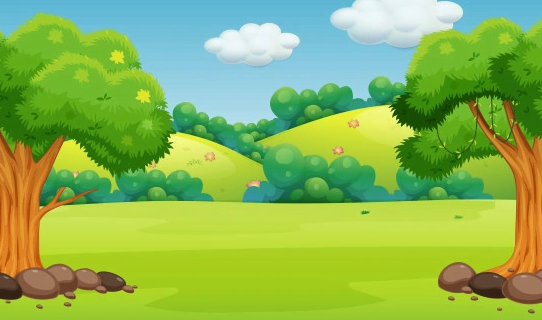
1- The light of a successful landscape photo
The central element that many overlook in landscape photography is light. This light is the cornerstone of the whole system because it is this light that will give the final appearance of your place. Attach paramount importance to the schedule to ensure a beautiful glow to your landscape photo. To shine, a landscape needs to be highlighting to bring out its shapes, colors, contrasts, and for that, sunlight will help you there as long as you take your photo at the best time. It is more effective to use morning or evening light for a captivating landscape photo.
Suppose we want to add volume, contrast, and color.
The weather will also be significant because there is more sun and more contrast if you have an overcast sky.
It is better to have good weather but be careful if you have a blue sky without clouds, it is not necessarily better, because your atmosphere will be empty and without much interest.
Sunny weather with a few clouds will be preferring. Even overcast weather will be conducive to a beautiful light for sunset or sunrise, as long as the horizon is evident on the sun side.
Suppose you take your photos in the middle of the day, with the sun at its highest. You risk flattening the volumes of your scene. It’s good to do multiple photoshoots of a place at different times and seasons to get the best out of it. It is indeed more accessible if the spot is near you. It is more effective to use morning or evening light for a captivating landscape drawing photo.
2- Photo equipment for the landscape
I am used to saying that the equipment does not make the photographer, but it allows them to accompany him in the successful realization of his photo ambition. The camera is essential, but the most important thing is that you could do RAW to get as much information as possible on both high and low lights.
The tripod is the essential accessory for the landscape photographer. Indeed, if we do not have a moving subject on our stage, we will not worry about the speed.
The lowest possible sensitivity will be used for good image quality, which risks causing a slow speed, so the tripod is mandatory for an explicit scene.
The adjustable trigger is also essential to avoid moving our camera when shooting the photo, especially if the speed is slow. The polarizing filter will sometimes be an excellent ally to highlight the colors, water depth, and contrast. The ND filters will be out as soon as you want to make a long exposure, or even very long. Finally, I will talk about the photo lens. It must be of quality to provide you with good sharpness and rendering of the image. We often use a wide-angle to get as much of the landscape as possible, horizontally or vertically.
It is also good to have a telephoto lens, allowing us to pick up subtle details of our scene. The last thing, cover yourself up and put on appropriate shoes, according to the temperature and the weather, because nothing is worse than being cold or being soaked to take pictures. The comfort will make you more efficient, and you will take the time necessary to achieve your photos. The opposite will make you go quickly and not in the right direction to end the ordeal as soon as possible.
3- What settings to use for the landscape photo?
There is a multitude of adjustment possibilities for your camera. The objective will be to be as efficient as possible. The most accessible setting for a beginner is not an automatic mode but an iris priority mode. It is a semi-automatic mode, we put for ISO, 100 iso, and you choose the diaphragm to have a good depth of field. In general, a wide-angle, f / 11 will be fine, and the camera will generally offer you a suitable speed to get the correct exposure. The more your diaphragm is closed, the more you will have a large clear area in your photo.
You will have a large area of sharpness if you are at f / 11 or f / 16, and conversely, you will not have a large area of focus in your photo if you use an aperture at f / 2.8 or f / 3.5, for example.
You may have a reasonably long speed, but our image will be perfectly sharp since we are using a tripod.
For those who want to use the manual mode, set your sensitivity to ISO 100, set an aperture of f / 11 at least, and use a speed suitable for your scene to have the correct exposure according to your expectations. You will have to use a tripod and a flexible or remote shutter release button to avoid motion blur. If you ever have a subject or a moving element in your scene and want to freeze it, increase your speed and ISO sensitivity until you get good exposure and your issue is in focus.
4- Incorporate an element in the foreground
When it is achievable, it is beneficial to have an element in the foreground as a focal point for the gaze of our spectators. By the sea or by the lake, it will be a boat or driftwood, for example. On a countryside view, it can be a tree, a vehicle, a walker, an animal, or many other things. It will depend on the opportunity of the moment or the luck that can sometimes occur.
This element can also give a dimension of scale to your scene.
If it’s a human, it will bring life, and an extra dimension to the emotion suggested in your image.
As we have just seen together in these few explanatory lines on taking landscape photographs, there are plenty of possibilities to improve the quality and the final rendering of your images.
So, let your imagination and creativity free, put no limits on them, and you will see that with the use of these tips in the field, your photos will be remarkable and noticed






